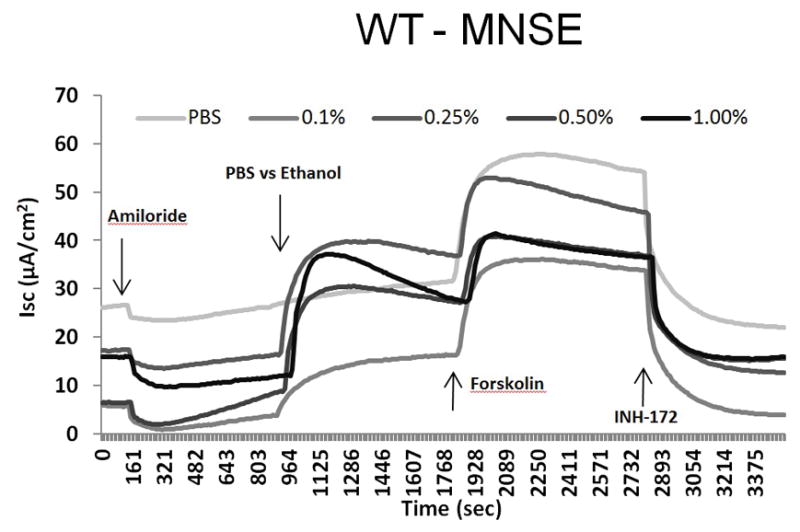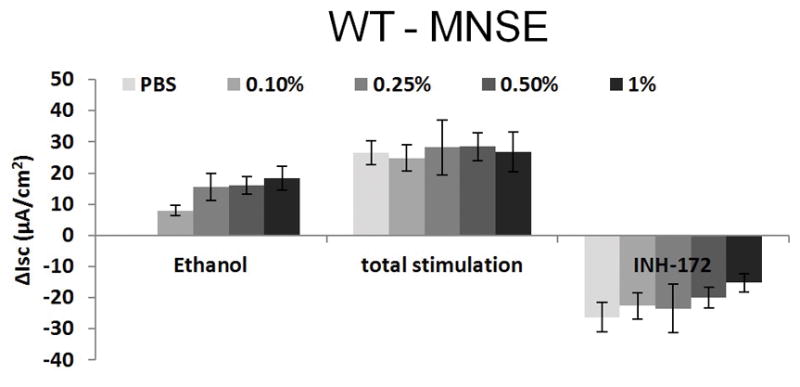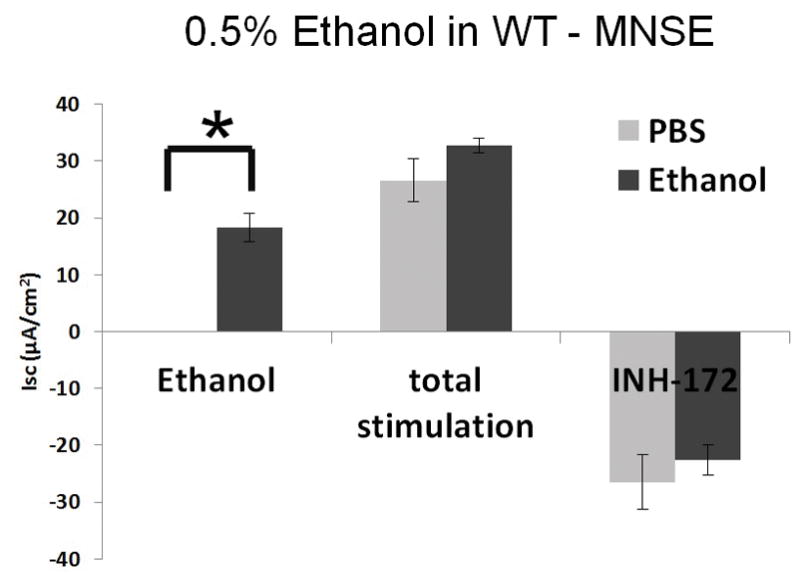Figure 2. Ethanol Stimulates CFTR-mediated Cl− Transport in WT MNSE in vitro.



A: Representative Ussing chamber tracings reveal ethanol activation of Cl− transport in a dose-dependent fashion. By convention, a positive deflection in the tracing (ΔISC) represents movement of an anion (i.e. Cl−) in the serosal to mucosal direction.
B: Summary representation of ethanol stimulation vs. total stimulation [ethanol+ forskolin (100 nM)] of transepithelial Cl− conductance (n = 4 per condition). Ethanol concentrations > 0.5% results in decreased total stimulation.
C: Ethanol (0.5%) significantly increased Cl− transport when compared to PBS control (n = 3; p = 0.0018). Total stimulated ΔISC and inhibition of CFTR-mediated ISC following application of INH-172 with [ethanol + forskolin] were higher than those with [PBS + forskolin] (total stimulated ΔISC of ethanol + forskolin (n = 3) = 32.7 ± 2.2 μA/cm2; total stimulated ΔISC of PBS + forskolin (n = 3) = 26.6 ± 3.8 μA/cm2, p = 0.24). However, statistical significant was lacking. * Statistical significance (p < 0.05)
